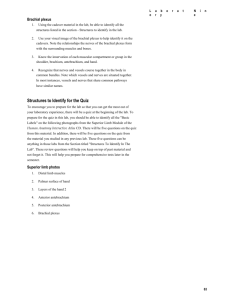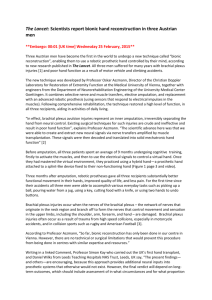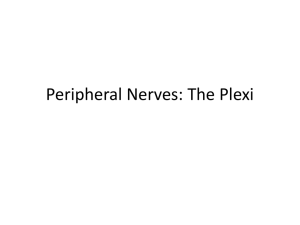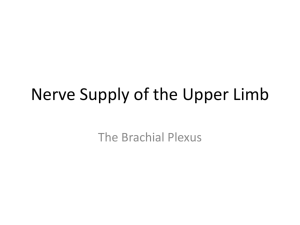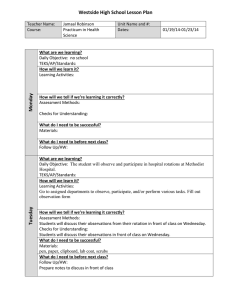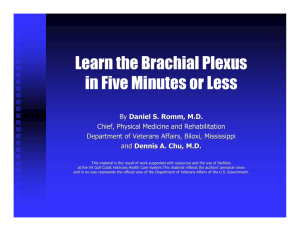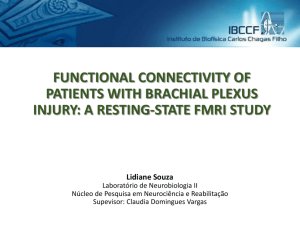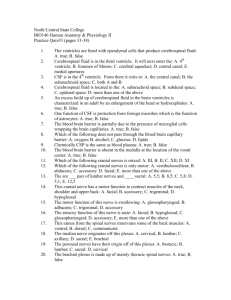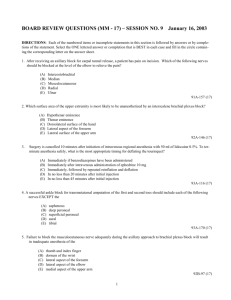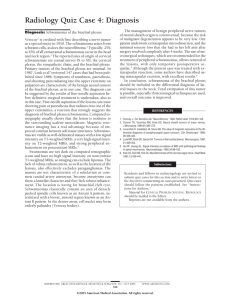Brachial Plexus Injury
advertisement
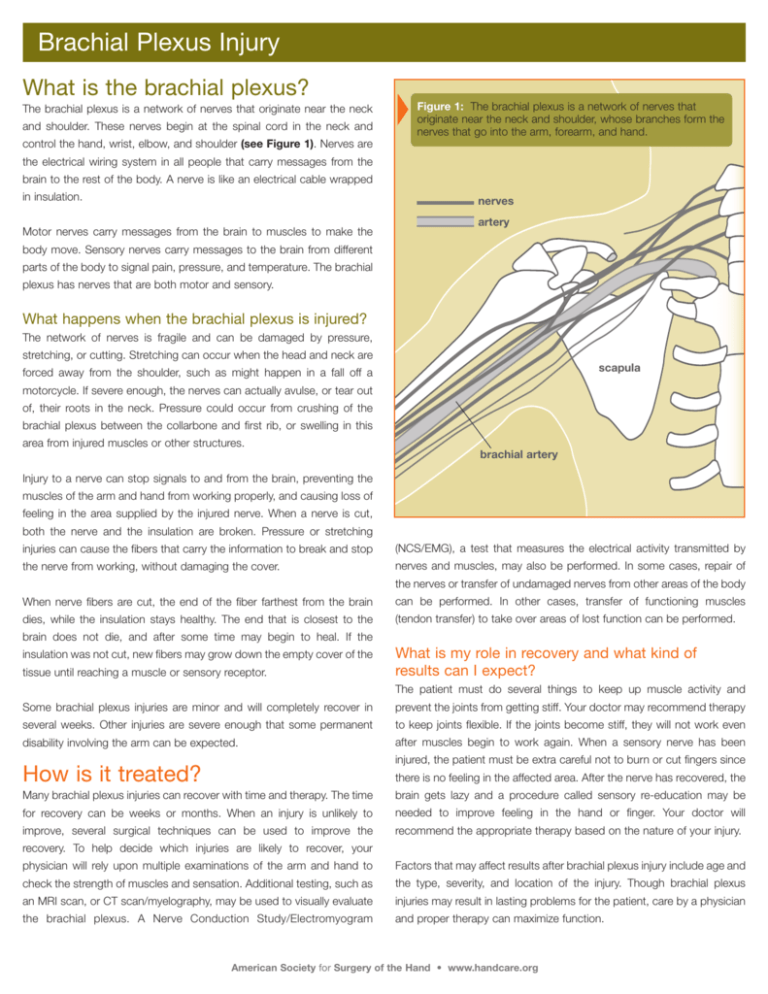
Brachial Plexus Injury What is the brachial plexus? The brachial plexus is a network of nerves that originate near the neck and shoulder. These nerves begin at the spinal cord in the neck and Figure 1: The brachial plexus is a network of nerves that originate near the neck and shoulder, whose branches form the nerves that go into the arm, forearm, and hand. control the hand, wrist, elbow, and shoulder (see Figure 1). Nerves are the electrical wiring system in all people that carry messages from the brain to the rest of the body. A nerve is like an electrical cable wrapped in insulation. nerves Motor nerves carry messages from the brain to muscles to make the artery body move. Sensory nerves carry messages to the brain from different parts of the body to signal pain, pressure, and temperature. The brachial plexus has nerves that are both motor and sensory. What happens when the brachial plexus is injured? The network of nerves is fragile and can be damaged by pressure, stretching, or cutting. Stretching can occur when the head and neck are scapula forced away from the shoulder, such as might happen in a fall off a motorcycle. If severe enough, the nerves can actually avulse, or tear out of, their roots in the neck. Pressure could occur from crushing of the brachial plexus between the collarbone and first rib, or swelling in this area from injured muscles or other structures. brachial artery Injury to a nerve can stop signals to and from the brain, preventing the muscles of the arm and hand from working properly, and causing loss of feeling in the area supplied by the injured nerve. When a nerve is cut, both the nerve and the insulation are broken. Pressure or stretching injuries can cause the fibers that carry the information to break and stop (NCS/EMG), a test that measures the electrical activity transmitted by the nerve from working, without damaging the cover. nerves and muscles, may also be performed. In some cases, repair of the nerves or transfer of undamaged nerves from other areas of the body When nerve fibers are cut, the end of the fiber farthest from the brain can be performed. In other cases, transfer of functioning muscles dies, while the insulation stays healthy. The end that is closest to the (tendon transfer) to take over areas of lost function can be performed. brain does not die, and after some time may begin to heal. If the insulation was not cut, new fibers may grow down the empty cover of the tissue until reaching a muscle or sensory receptor. What is my role in recovery and what kind of results can I expect? The patient must do several things to keep up muscle activity and Some brachial plexus injuries are minor and will completely recover in prevent the joints from getting stiff. Your doctor may recommend therapy several weeks. Other injuries are severe enough that some permanent to keep joints flexible. If the joints become stiff, they will not work even disability involving the arm can be expected. after muscles begin to work again. When a sensory nerve has been injured, the patient must be extra careful not to burn or cut fingers since How is it treated? there is no feeling in the affected area. After the nerve has recovered, the Many brachial plexus injuries can recover with time and therapy. The time brain gets lazy and a procedure called sensory re-education may be for recovery can be weeks or months. When an injury is unlikely to needed to improve feeling in the hand or finger. Your doctor will improve, several surgical techniques can be used to improve the recommend the appropriate therapy based on the nature of your injury. recovery. To help decide which injuries are likely to recover, your physician will rely upon multiple examinations of the arm and hand to Factors that may affect results after brachial plexus injury include age and check the strength of muscles and sensation. Additional testing, such as the type, severity, and location of the injury. Though brachial plexus an MRI scan, or CT scan/myelography, may be used to visually evaluate injuries may result in lasting problems for the patient, care by a physician the brachial plexus. A Nerve Conduction Study/Electromyogram and proper therapy can maximize function. American Society for Surgery of the Hand • www.handcare.org
